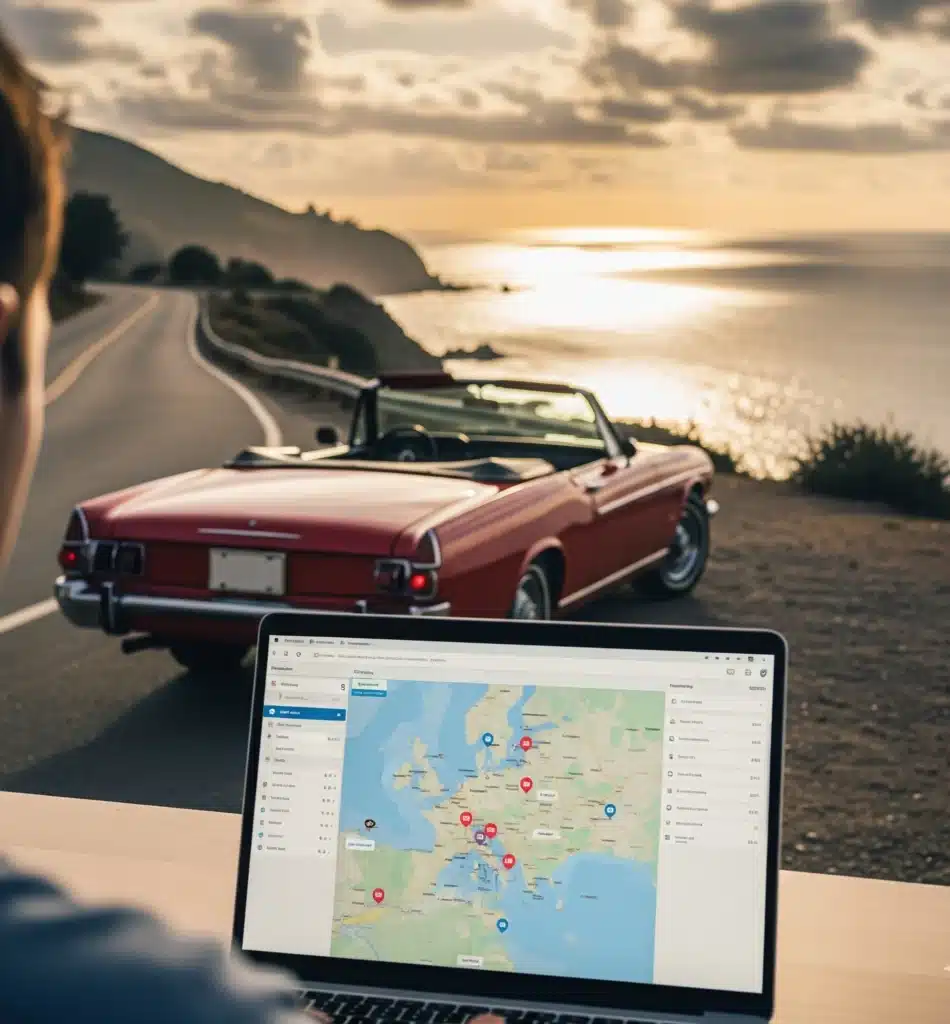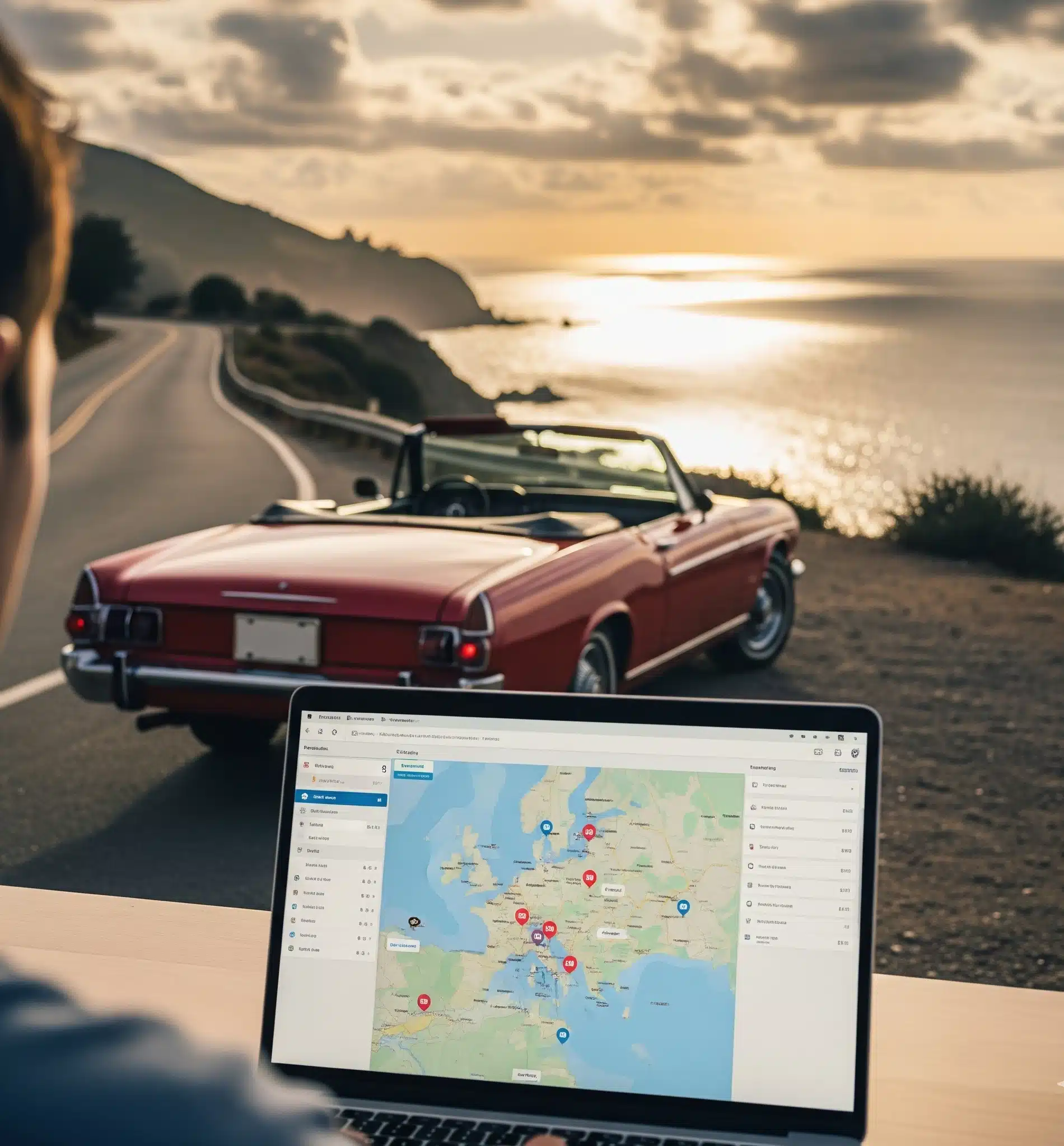Google Flights Tricks Every Road Tripper Should Know: Save Big on Your Next Adventure

Google Flights Tricks Every Road Tripper Should Know
Dreaming of cruising down California’s Highway 1, exploring the dramatic landscapes of the Scottish Highlands, or weaving through the charming villages of Tuscany? A road trip is the ultimate adventure, offering unparalleled freedom and flexibility. But what if your dream drive is thousands of miles away? That’s where the journey often begins: with a flight.
Many road trippers overlook one of the most powerful tools available for slashing travel costs right from the start: Google Flights. You might think of it as just a tool for round-trip vacations, but it’s a goldmine for road trippers planning one-way adventures or complex itineraries.
By mastering a few simple Google Flights tricks, you can find incredibly cheap flights to kickstart your journey, leaving you with more money to spend on experiences, food, and fuel. Get ready to transform how you plan your travels. Here are the essential Google Flights tricks every road tripper needs to know.
1. Embrace the Power of the “Explore” Map
For a road tripper, flexibility is everything. You might know the general region you want to explore, but are you tied to a specific airport? Probably not. This is where the Google Flights Explore feature becomes your best friend.
Instead of typing in a specific destination, leave the destination box blank and click on the “Explore” map. Google Flights will populate a map with flight prices to various airports from your departure city. You can pan, zoom, and see real-time prices for an entire continent.
How it helps the road tripper:
- Find the Cheapest Gateway City: You plan to road trip through the Pacific Northwest. Instead of just searching for flights to Seattle (SEA), the Explore map might show you that flying into Portland (PDX) or even Vancouver (YVR) is hundreds of dollars cheaper. You can rent your car there and start your adventure, having saved a significant amount before you even hit the road.
- Discover New Starting Points: Let the prices guide you. Perhaps you were set on starting a European road trip in Paris, but the map shows a bargain flight to Amsterdam. Why not start there? This flexibility can lead to unexpected and wonderful additions to your itinerary.
- Set Flexible Date Ranges: You can search for a “one-week trip in the next 6 months.” This allows the algorithm to find the absolute cheapest combination of dates and destinations, perfect for those with a flexible schedule.
To use it, simply go to the Google Flights homepage, enter your departure airport and desired dates (or a flexible range), and click the “Explore” button.
2. Master the One-Way Ticket Strategy
Road trips are rarely about returning to your starting point. You might drive from Lisbon to Barcelona, or from Miami up the East Coast to New York. Booking two separate one-way tickets is often the best strategy, and Google Flights excels at finding these deals.
Many traditional airlines used to penalize travelers for booking one-way flights, often charging more than half the price of a round-trip ticket. However, with the rise of budget carriers, this is no longer the norm.
How to use this trick:
- Fly In and Out of Different Cities: Search for a one-way flight to your starting city (e.g., San Francisco). Then, perform a separate one-way search from your end city (e.g., Los Angeles) back home. This “open-jaw” itinerary is the essence of a great road trip.
- Compare One-Way vs. Round-Trip: Before you book, do a quick round-trip search for the same dates to your starting city. Sometimes, a round-trip ticket (even if you discard the return leg) can be cheaper than a one-way fare. This is rare, but it’s always worth a 30-second check.
3. Let the Deals Come to You with Price Alerts
Flight prices are notoriously volatile. They can change by the hour. Instead of manually checking prices every day, let Google do the work for you.
Once you’ve identified a potential flight or a route, you can set up a price alert. Google will email you when the price for your tracked flight drops or is about to increase.
Why this is crucial for road trippers:
- Lock in the Best Price: Planning a road trip often involves months of preparation. This gives you plenty of time to track flights. By setting an alert early, you can watch the price trends and book when the fare hits a low point.
- Track Multiple Routes: Not sure if you want to start in Denver or Salt Lake City for your National Parks trip? Set up price alerts for both routes! You can track multiple options simultaneously and book whichever one offers the best deal.
To set an alert, simply search for your desired flight. On the results page, you’ll see a toggle button that says “Track prices.” Click it, and Google will start monitoring that flight for you.
4. Use the Date Grid and Price Graph for Visual Savings
If your travel dates are a bit flexible, you can unlock massive savings. Google Flights has two fantastic visual tools to help with this: the Date Grid and the Price Graph.
When you click on the departure date, a calendar will pop up. Instead of selecting a specific date, you can click on “Date Grid” or “Price Graph.”
- Date Grid: This shows you a 7×7 grid of prices, displaying different combinations of departure and return dates. You can instantly spot which combination is the cheapest. For one-way trips, it simplifies to showing you the cheapest days in a two-month view.
- Price Graph: This tool shows you a bar graph of prices over a period of weeks or months. You can easily see how much prices fluctuate and identify the cheapest period to fly.
For a road tripper planning a one-way journey, simply select the calendar and you’ll see prices for each day. The cheapest dates are often highlighted in green, making it incredibly easy to see if leaving a Tuesday versus a Friday could save you a hundred dollars or more.
5. Check Nearby Airports for Hidden Gems
This is one of the easiest and most effective Google Flights tricks. When you’re searching for a flight, don’t just type in a single airport code. After entering your main airport, click on the box again and Google will often suggest nearby airports. You can also manually add them.
For example, if you’re planning a road trip in Southern Florida, searching for flights to Miami (MIA), Fort Lauderdale (FLL), and West Palm Beach (PBI) simultaneously could reveal a much cheaper option. FLL is often a major hub for budget airlines like Spirit and JetBlue, and it’s only a short drive from Miami.
How it benefits your road trip:
- Lower Fares: Smaller, regional airports often have lower landing fees and are served by budget carriers, resulting in cheaper tickets.
- Cheaper Car Rentals: Car rental prices can also vary dramatically between airports. The money you save on a flight to a smaller airport might be compounded by savings on your rental car.
Always check the distance and transportation options from the alternate airport to ensure the savings aren’t lost on a long or expensive taxi ride. Since you’re renting a car anyway, this is usually a winning strategy.
6. Understand Airline Alliances and Separate Tickets
Google Flights is smart. It not only shows you direct bookings but also combines flights from different, non-allied airlines to create the cheapest possible itinerary. These are often labeled as “Separate tickets.”
For instance, it might pair a flight on a major carrier with a connecting flight on a budget airline. While this can offer incredible savings, it comes with a risk: if your first flight is delayed and you miss your connection, the second airline has no obligation to rebook you.
For the road tripper, this is less of a risk and more of an opportunity. You are likely booking a single, direct, one-way flight to your destination. However, being aware of which airlines operate as partners (like Star Alliance, oneworld, or SkyTeam) versus which are budget carriers can help you make more informed decisions about baggage fees and service quality.
A Final Tip: Go Incognito, But Don’t Overthink It
You may have heard the myth that airlines and travel sites use your browser cookies to track your searches and increase prices. While there’s little hard evidence to support this on a large scale with Google Flights itself, it costs nothing to be cautious.
Using an incognito or private browsing window is a good habit to get into when searching for flights. It ensures you’re seeing a clean slate of prices without any potential influence from your search history.
However, don’t let this paralyze you. The biggest factors influencing price are demand, time of year, and how far in advance you book—not whether you’ve searched for the same flight five times. Use the tools above, set your alerts, and when you see a price that fits your budget, book it with confidence.
By integrating these Google Flights tricks into your planning process, you’ll stop overpaying for airfare and start your road trip with a fuller wallet and the satisfaction of knowing you scored the best deal possible. Happy travels!







